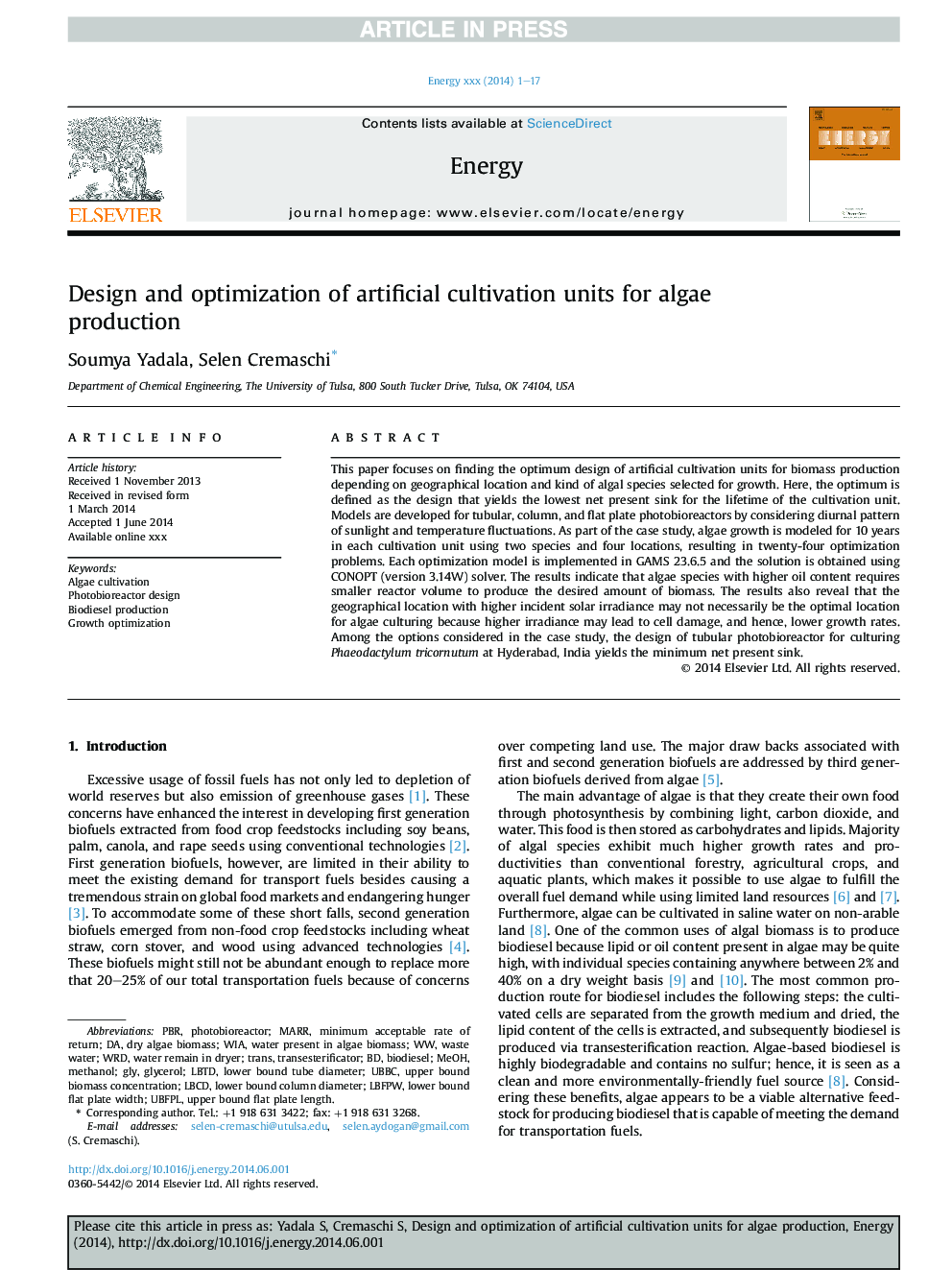| Article ID | Journal | Published Year | Pages | File Type |
|---|---|---|---|---|
| 8075961 | Energy | 2014 | 17 Pages |
Abstract
This paper focuses on finding the optimum design of artificial cultivation units for biomass production depending on geographical location and kind of algal species selected for growth. Here, the optimum is defined as the design that yields the lowest net present sink for the lifetime of the cultivation unit. Models are developed for tubular, column, and flat plate photobioreactors by considering diurnal pattern of sunlight and temperature fluctuations. As part of the case study, algae growth is modeled for 10 years in each cultivation unit using two species and four locations, resulting in twenty-four optimization problems. Each optimization model is implemented in GAMS 23.6.5 and the solution is obtained using CONOPT (version 3.14W) solver. The results indicate that algae species with higher oil content requires smaller reactor volume to produce the desired amount of biomass. The results also reveal that the geographical location with higher incident solar irradiance may not necessarily be the optimal location for algae culturing because higher irradiance may lead to cell damage, and hence, lower growth rates. Among the options considered in the case study, the design of tubular photobioreactor for culturing Phaeodactylum tricornutum at Hyderabad, India yields the minimum net present sink.
Keywords
Related Topics
Physical Sciences and Engineering
Energy
Energy (General)
Authors
Soumya Yadala, Selen Cremaschi,
